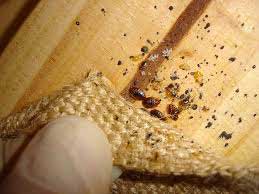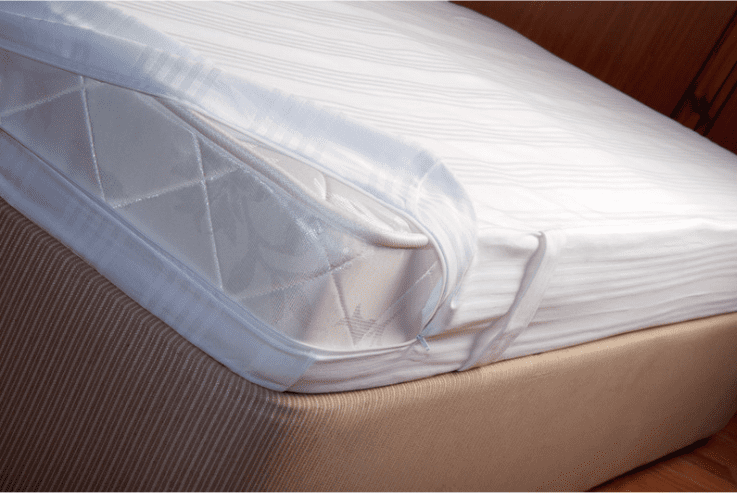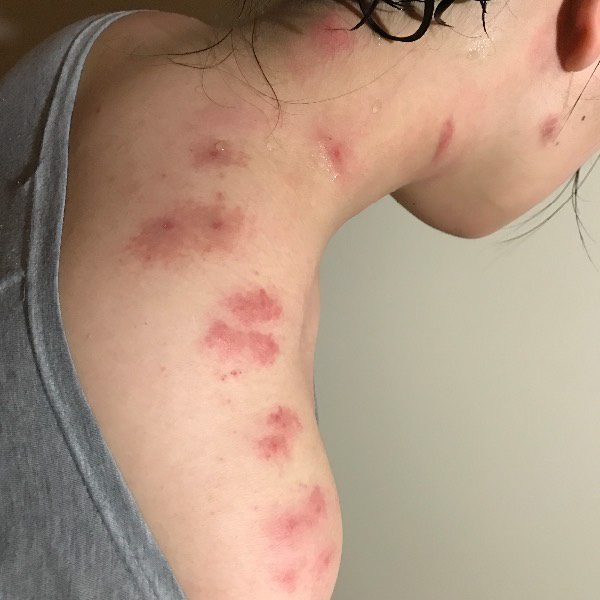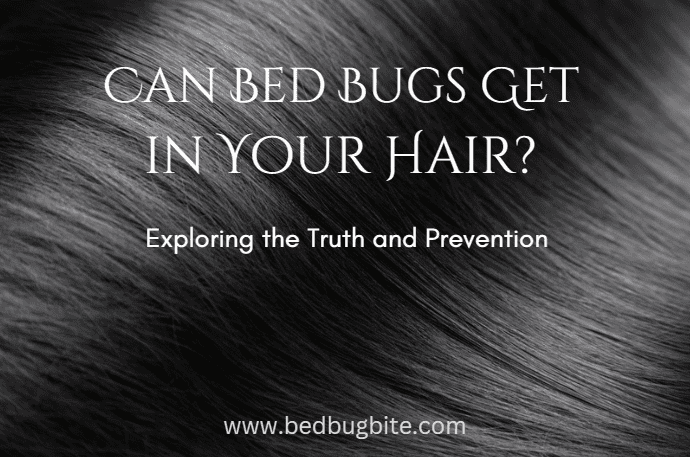Bed bugs, those tiny, elusive pests, have a way of sending shivers down our spines. The mere thought of them lurking in our homes, feeding on our blood while we sleep, is enough to make anyone cringe. But amidst all the rumors and myths, one question that often haunts our minds is, “Can bed bugs get in your hair?” It’s time to shed light on this scary topic and separate fact from fiction.
In this complete blog post, we delve into the world of bed bugs. Armed with the most accurate and detailed information available, We will debunk myths, and equip you with the knowledge to protect yourself and your home from these resilient pests.
Bed Bug Behavior and Habits:
Understanding the behavior and habits of bed bugs is crucial in our battle against these persistent pests. Bed bugs are opportunistic creatures that thrive on human blood, making our homes their preferred hunting grounds. No corner is too small for them to hide; they seek refuge in cracks, crevices, and even electrical outlets, emerging under the cover of darkness to feed on unsuspecting hosts. Their elusive nature and ability to go months without feeding make them challenging to detect and eradicate.

Bed bugs are skilled hitchhikers, latching onto luggage, clothing, and other belongings to spread from one location to another. This means that even the cleanest and most luxurious of accommodations can fall prey to a bed bug infestation. To spot their presence, we need to be on the lookout for their tell-tale signs, such as small reddish-brown stains on bedding, shed skins, and a distinctive musty odor in infested areas.
By understanding their habits and recognizing early indicators of an infestation, we can act quickly to prevent their numbers from multiplying. It’s essential to address a bed bug problem promptly. Delaying treatment can lead to a more significant infestation and potential health risks due to their bites. Armed with this knowledge, we can now take proactive steps to protect our homes and loved ones from these parasites.
Possible Infestation Areas:
Bed bugs are cunning infiltrators, and knowing their favorite hiding spots is vital to thwart their invasion. While they are called “bed” bugs for a reason, their affinity for cozy sleeping areas is just one part of the story. They can infest various parts of our homes, particularly those near their hosts – us. Apart from mattresses and box springs, these pesky intruders can lurk within cracks and crevices of bed frames, headboards, and nearby furniture. Don’t let their name fool you; they are equally at home in couches, chairs, and curtains. As expert hitchhikers, they may travel from infested areas to other rooms or even next door apartments through wall voids and electrical conduits. Don’t overlook less common places either, such as behind loose wallpaper, in electrical outlets, or inside the pages of books left undisturbed for long periods.
To protect our living spaces effectively, we need to conduct thorough inspections. Pay close attention to the areas where they are most likely to congregate. Early detection can make a difference in preventing an infestation and save us from potential sleepless nights and itchy bites. Remember, an eye and awareness of their preferred areas are crucial in staying one step ahead of these unwelcome guests.
Bed Bugs and Hair: Can They Nest in Your Hair?
The idea of bed bugs making a home in our hair is enough to trigger anyone’s worst nightmares. Fear not, for reality offers a glimmer of relief. While bed bugs are masterful at finding hiding spots close to their hosts, nesting in human hair is an exceedingly rare occurrence. Bed bugs are primarily drawn to areas where they can easily access a blood meal, such as the exposed skin of our arms and legs. Their flat bodies are designed to navigate through tiny crevices, allowing them to slip between fibers in mattresses or furniture, but our hair poses quite a different challenge.

The structure of human hair makes it a less desirable habitat for these pests. The fine strands and scalp’s constant movement create an environment that bed bugs find difficult to navigate and establish a nest. Instead, they prefer to dwell in places with less motion and easy access to their human hosts during the night.
Although the likelihood of bed bugs nesting in your hair is low, it is not impossible for them to come into contact with it. Bed bugs may crawl through hair while searching for a suitable feeding spot on the body. However, they do not nest or lay eggs in hair. There’s no need to lose sleep over this particular concern.
As we unravel the truth behind bed bugs and hair, it’s essential to focus on preventative measures to keep these pests at bay. By understanding their behaviors, we can better protect ourselves and our homes from infestations, leaving us to rest easy knowing that our hair is not a hideout for these intruders.
Hair Contact and Bed Bug Transfer:
While the prospect of bed bugs nesting in our hair is unlikely, it is still essential to be aware of the potential for hair contact and bed bug transfer. Bed bugs are notorious hitchhikers, and they can accidentally find themselves entangled in our hair during their nocturnal explorations. If we come into contact with infested areas, such as furniture or clothing, there is a possibility of a few bed bugs hitching a ride on our hair back to our living spaces.
However, it’s crucial to understand that bed bugs do not prefer to remain on our bodies for extended periods. They are opportunistic feeders, and their primary goal is to access exposed skin for a blood meal. As soon as they find a suitable feeding spot, they will quickly make their way to it, leaving our hair behind.
To minimize the risk of bed bug transfer through hair contact, taking precautionary measures is key. Regularly inspecting and cleaning our living spaces, especially after traveling or staying in places with potential infestations, can significantly reduce the chances of bed bugs finding their way into our homes. Additionally, practicing good personal hygiene and avoiding infested areas can help prevent accidental hitchhiking.
By staying informed, we can ensure that we minimize the possibility of bed bug transfer through hair contact and maintain a bed bug-free environment for a peaceful night’s sleep. Remember, knowledge and preparedness are our most potent weapons against these elusive pests.
Preventing Bed Bugs in Your Home:
When it comes to bed bugs, the adage “prevention is better than cure” holds true. Safeguarding your home from a potential bed bug invasion starts with adopting proactive prevention measures. Firstly, it’s essential to maintain cleanliness and order in your living spaces. Regularly vacuuming and cleaning your bedroom, living room, and other areas can help eliminate any bed bugs or eggs that may have made their way in. Pay special attention to the seams and crevices of mattresses, furniture, and curtains where these sneaky pests love to hide.
To create a bad environment for bed bugs, consider using protective encasements for your mattresses and box springs. These encasements act as a barrier, preventing bed bugs from burrowing into your bedding and making it easier to detect any potential infestations.
If you are planning to travel, inspect your luggage and belongings thoroughly before returning home. Washing and drying your clothes on high heat can help kill any hidden bed bugs or their eggs that might have tagged along. Be cautious when acquiring second-hand furniture or clothing, as they could harbor hidden bed bugs.
In communal spaces like hotels, dorm rooms, and offices, remain vigilant and avoid placing your belongings directly on beds, sofas, or carpets. Utilize hooks or racks to keep your belongings elevated and away from potential bed bug hotspots.
By implementing these preventative measures, you can significantly reduce the risk of bed bugs making themselves at home in your living spaces. Vigilance and proactive action are essential in the battle against these pests, ensuring you can rest free from the discomfort and anxiety that bed bugs bring.
Dealing with Bed Bugs:
Discovering a bed bug infestation in your home can be a stressful experience, but fear not, for there are effective steps you can take to combat these unwelcome invaders. When facing a bed bug problem, the first crucial step is to remain calm and avoid panic. Swift action is essential, but it’s equally vital to approach the situation methodically.
Start by isolating infested items to prevent the bed bugs from spreading further. Wash all infested bedding, clothing, and fabrics in hot water. Dry them on high heat to eliminate these pests at all life stages. Use a stiff brush to scrub the seams of your mattress, furniture, and baseboards, dislodging any hidden eggs or bugs. Vacuum thoroughly, making sure to dispose of the vacuum bag in a sealed plastic bag outside your home immediately.

Consider using chemical or non-chemical treatments to address the infestation effectively. While there are DIY options available, seeking professional help from pest control experts may be the most efficient way to eradicate bed bugs completely. Professional exterminators have the knowledge to implement treatments, ensuring that all bed bugs and their eggs are gone.
Post-treatment, monitor your living spaces regularly to catch any resurgence early on. Remember that dealing with bed bugs may require persistence and multiple treatments to ensure their complete elimination. Maintaining a clean and clutter-free environment is crucial in preventing future infestations.
By tackling a bed bug infestation promptly and strategically, you can reclaim your home and rest easy once again. Don’t hesitate to seek professional assistance when needed. Their expertise can make all the difference in restoring peace and comfort to your living spaces.
Myths and Misconceptions about Bed Bugs:
In the realm of bed bugs, myths and misconceptions abound, often causing unnecessary fear and confusion. Let’s shed light on some of the most common misconceptions surrounding these elusive pests. First and foremost, bed bugs are not a sign of poor hygiene. They can infest any environment, whether pristine or cluttered. Their primary interest lies in our blood, not in the cleanliness of our surroundings.
Another myth suggests that bed bugs are only found in beds. While they do favor areas close to their hosts, they are incredibly versatile and can inhabit various spaces, from couches and chairs to electrical outlets and even behind wallpaper. Recognizing the range of possible infestation areas is crucial in effective detection and prevention.
Furthermore, some believe that bed bugs are invisible to the naked eye. While they are small, adult bed bugs are visible to most people, typically measuring around 4-5 mm in length. However, their ability to hide in tiny cracks and crevices makes them challenging to spot, emphasizing the importance of thorough inspections.

Perhaps one of the most dangerous beliefs is that bed bugs are harmless and do not pose any health risks.
Their bites can cause discomfort, itching, and in some cases, allergic reactions. Additionally, the emotional toll of dealing with a bed bug infestation can be significant, affecting sleep quality and overall well-being.
By dispelling these myths and misconceptions, we can better equip ourselves to tackle bed bug issues effectively. Understanding the truth about these bugs empowers us to take informed action. We can then implement preventative measures and seek professional assistance when needed. Remember, knowledge is the key to staying one step ahead of bed bugs ensuring a safe and pest-free living environment.
In this post, we explored the question, “Can bed bugs get in your hair?” While bed bugs are pests that can infest various parts of your home, nesting in human hair is rare. We discussed their behavior, preferred habitats, and the likelihood of them residing in hair. To stay protected, we shared effective prevention tips and steps to deal with bed bug infestations. Don’t let misconceptions fool you; arm yourself with the right knowledge to keep your home bed bug-free!

